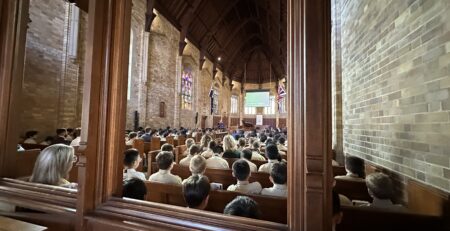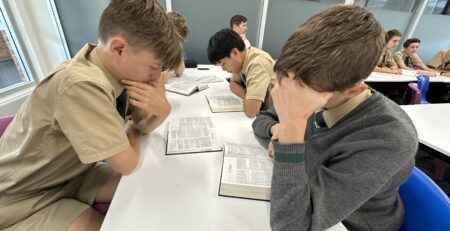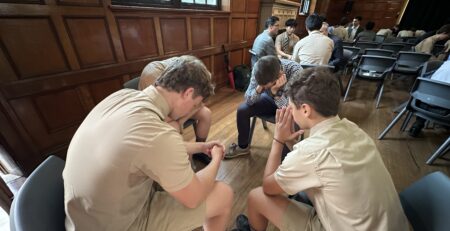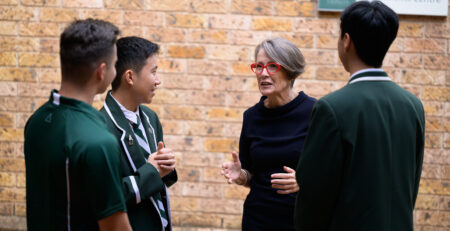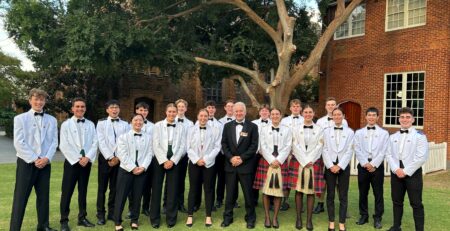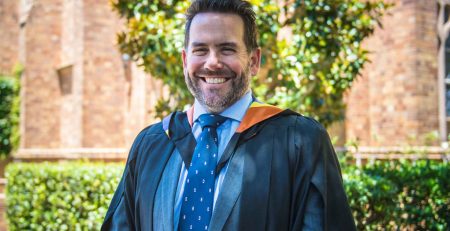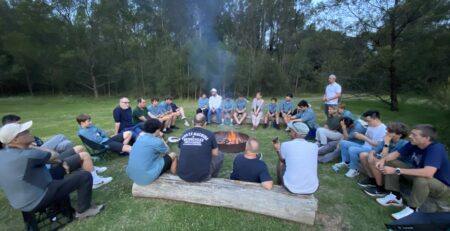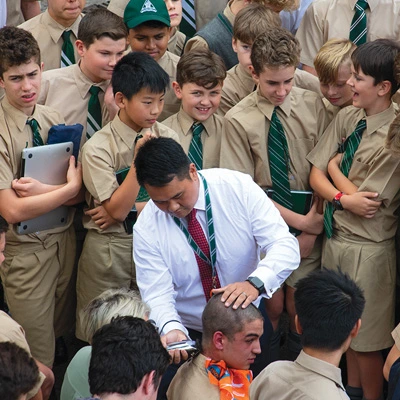Room for Improvement
Trials underway for new “adaptable” classrooms
IF SPORTING COACHES CAN SET OUT THEIR STALLS BEFORE TRAINING – ARRANGING THEIR CONES, POLES, NETS AND “WALLS” TO SUIT SPECIFIC TASKS – WHY CAN’T TEACHERS DO SOMETHING SIMILAR IN THEIR CLASSROOMS?
Soon they will be.
Trinity is busy designing flexible classrooms which can be changed to suit the lesson, rather than the other way around.
It’s part of the focus on what the School calls “student centred learning”, and it’s likely to mean a move away from the traditional “old school” approach where teachers stand and deliver for 45 minutes from the front of the class.
Proponents say it will lead to more inter-active learning and greater variety for both teachers and students, who will arrive not knowing whether their classroom set-up will be anything like it was for their previous lesson.
The new-look classroom is being developed and trialled now in the School’s Centenary building and is expected to be incorporated into Trinity’s upcoming “Renewal” building project.
It’s the result of a happy coincidence in which 10 teachers started studying for their Masters degree in Educational Leadership through Newcastle University around the same time as the School was considering its next major building development.
Deputy Principal Craig Sandwell and Academic Dean Debbie Williams had attended a research seminar at Melbourne University and were relaying some of the findings to Trinity teachers when the penny dropped.
“The content addressed exactly what we were studying in our first core subject – building better learning environments,” said Head of Geography Adrian Shipp, the academic leader in the classroom trials.
“I sat there thinking, ‘This is going into my assignment’. It felt like someone was looking down saying, ‘This is all coming together’. It’s an amazing coincidence; it meshes with the School’s plans, so it’s a win-win. I’m just applying what I’m doing in my studies.
“We’re in our infancy at the moment but it could apply across all subjects.
“I’m grateful that Trinity has the leadership vision and the resources to make this happen.
“It allows me to give things a go that I’m passionate about, with support from superiors.”
He said the new system made spaces adaptive, where furniture and teaching aids could be moved and the room could be “broken down and changed up” to meet specific requirements.
It would allow teachers greater physical access to all groups and students that needed attention.
“In a normal classroom you can’t get in there to help a group that needs raising,” he said.
It would also help planning lessons, enabling teachers to ask, ‘What am I teaching today? What’s the means to the end? Where do I want to get to at the end of the lesson?’
Academic Dean Debbie Williams said a presentation by Geography teachers to the School’s Academic Committee was a “marvellous example of leadership, collaboration and a fine understanding of student-centred pedagogies to foster stronger student engagement”.
“I think the response from the other academic leaders of the school was very positive.
“I’m sure they appreciated an insight into how the Geography faculty is embracing this opportunity for student engagement.”

